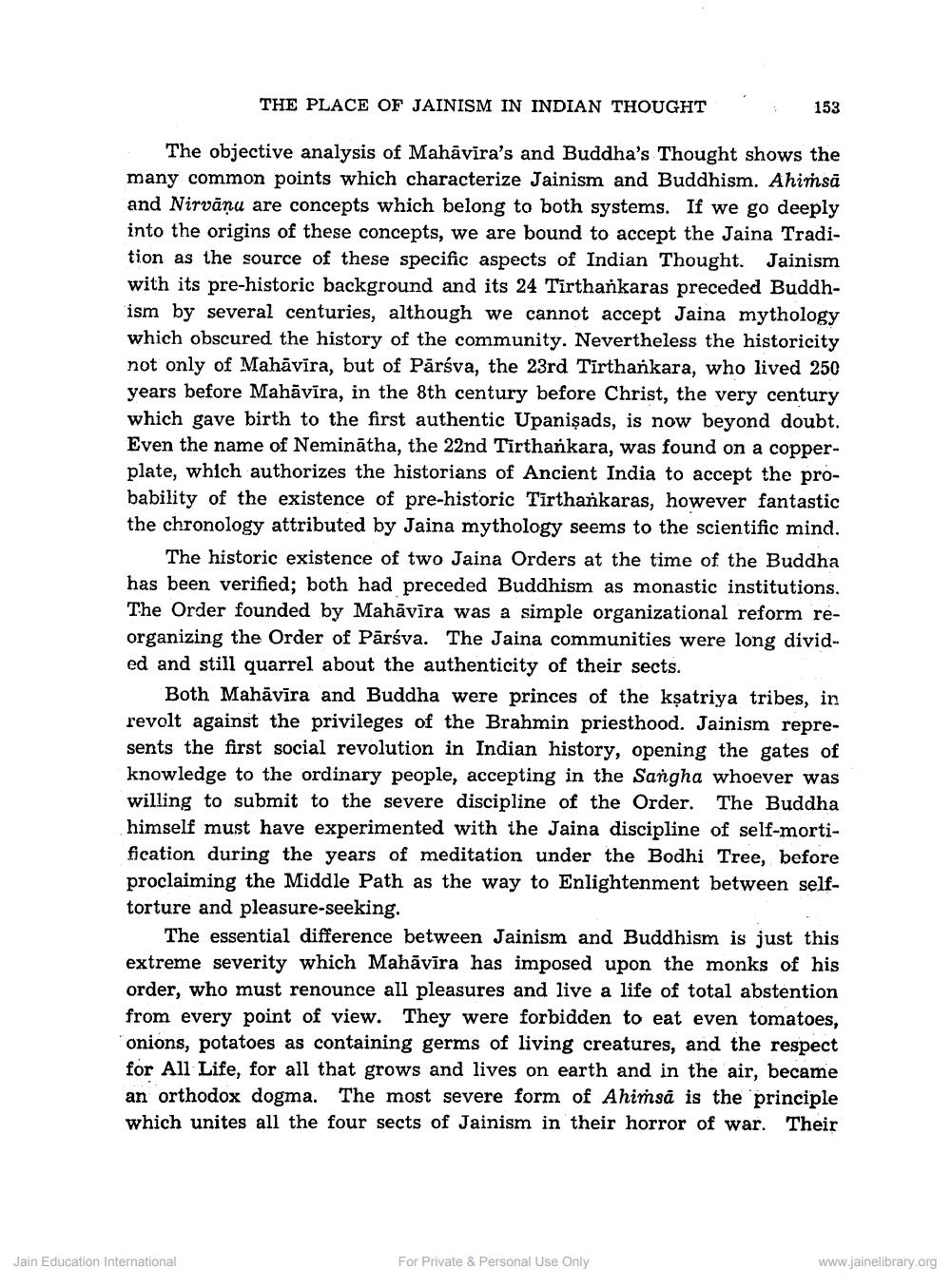Book Title: Place of Jainism in Indian Thought Author(s): Felix Valyi Publisher: Z_Vijay_Vallabh_suri_Smarak_Granth_012060.pdf View full book textPage 2
________________ THE PLACE OF JAINISM IN INDIAN THOUGHT 153 The objective analysis of Mahāvira's and Buddha's Thought shows the many common points which characterize Jainism and Buddhism. Ahimsa and Nirvāņu are concepts which belong to both systems. If we go deeply into the origins of these concepts, we are bound to accept the Jaina Tradition as the source of these specific aspects of Indian Thought. Jainism with its pre-historic background and its 24 Tirthankaras preceded Buddhism by several centuries, although we cannot accept Jaina mythology which obscured the history of the community. Nevertheless the historicity not only of Mahāvira, but of Pārsva, the 23rd Tirthankara, who lived 250 years before Mahāvīra, in the 8th century before Christ, the very century which gave birth to the first authentic Upanişads, is now beyond doubt. Even the name of Neminātha, the 22nd Tirthankara, was found on a copperplate, which authorizes the historians of Ancient India to accept the probability of the existence of pre-historic Tirthankaras, however fantastic the chronology attributed by Jaina mythology seems to the scientific mind. The historic existence of two Jaina Orders at the time of the Buddha has been verified; both had preceded Buddhism as monastic institutions, The Order founded by Mahāvīra was a simple organizational reform reorganizing the Order of Pārsva. The Jaina communities were long divided and still quarrel about the authenticity of their sects. Both Mahāvīra and Buddha were princes of the ksatriya tribes, in revolt against the privileges of the Brahmin priesthood. Jainism represents the first social revolution in Indian history, opening the gates of knowledge to the ordinary people, accepting in the Sangha whoever was willing to submit to the severe discipline of the Order. The Buddha himself must have experimented with the Jaina discipline of self-mortification during the years of meditation under the Bodhi Tree, before proclaiming the Middle Path as the way to Enlightenment between selftorture and pleasure-seeking. The essential difference between Jainism and Buddhism is just this extreme severity which Mahāvīra has imposed upon the monks of his order, who must renounce all pleasures and live a life of total abstention from every point of view. They were forbidden to eat even tomatoes, onions, potatoes as containing germs of living creatures, and the respect for All Life, for all that grows and lives on earth and in the air, became an orthodox dogma. The most severe form of Ahimsā is the principle which unites all the four sects of Jainism in their horror of war. Their Jain Education International For Private & Personal Use Only www.jainelibrary.orgPage Navigation
1 2 3 4 5
